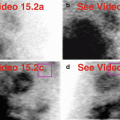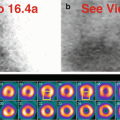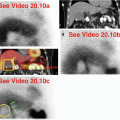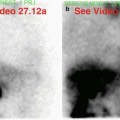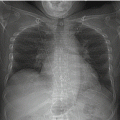and Vincent L. Sorrell2
(1)
Division of Nuclear Medicine and Molecular Imaging Department of Radiology, University of Kentucky, Lexington, Kentucky, USA
(2)
Division of Cardiovascular Medicine Department of Internal Medicine Gill Heart Institute, University of Kentucky, Lexington, Kentucky, USA
Electronic supplementary material
The online version of this chapter (doi: 10.1007/978-3-319-25436-4_18) contains supplementary material, which is available to authorized users.
Peritoneal findings generally relate to the presence of free fluid (Table 18.1). Ascites appears “cold” and may cause an attenuation artifact typically affecting the inferior myocardial wall (Chamarthy and Travin 2010; Raza et al. 2005a, b; Shih et al. 2002, 2005; Tallaj et al. 2000; Williams et al. 2003). The volume of ascites in decompensated liver disease may vary significantly (Figs. 18.1, 18.2, and 18.3). Ascites separates the liver dome from the diaphragm on the right side, and the spleen may be displaced inferiorly by ascitic fluid under the left hemidiaphragm. The loops of the small intestine may float more centrally in large volume ascites (Fig. 18.3). Associated findings in cirrhosis include small liver, large spleen, gastric wall uptake (due to gastropathy), and pleural effusion(s) (Joy et al. 2007; Tallaj et al. 2000).
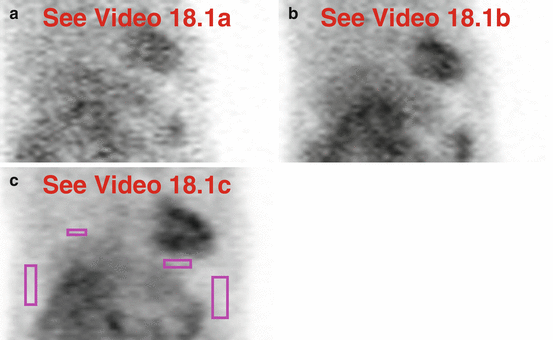
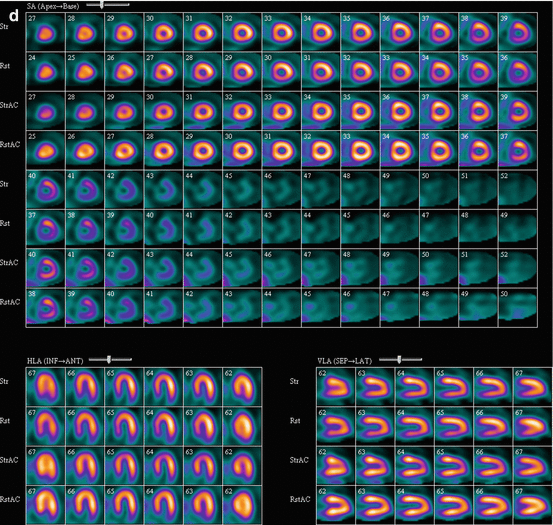
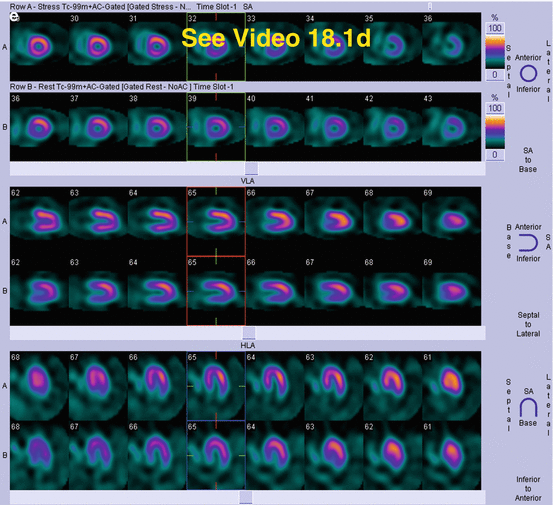
Table 18.1
Differential diagnosis of “hot” and “cold” imaging findings related to the peritoneum
Organ system | “Hot” finding | “Cold” finding | References |
|---|---|---|---|
Peritoneum | Not reported | Ascites (decompensated cirrhosis, malignancy) Peritoneal dialysate | Chamarthy and Travin (2010) Joy et al. (2007) Tallaj et al. (2000) Williams et al. (2003) |



Fig. 18.1




“Cold” ascites. A 34-year-old female has cirrhosis. The abdominal ascites appears photopenic (“cold”) (a–c). Note how the ascitic fluid outlines the abnormal viscera (small liver, “hot” stomach, enlarged spleen). On processed images (d), the ascites produces minimal attenuation artifact on the inferolateral-basal wall (more on the lower dosage rest images compared to the higher dosage stress images), and the examination is essentially normal. On gated images (e), all walls move and thicken normally. Even a moderate amount of ascites does not necessarily affect processing nor create a significant artifact, but it can produce striking effects in some patients.(a) Rest raw projection images (Video 18.1a, frame 1), 99mTc sestamibi. (b) Stress raw projection images (Video 18.1b, frame 1), 99mTc sestamibi. (c) Stress raw projection image (Video 18.1c, frame 9), 99mTc sestamibi, ascites (pink boxes). (d) Stress/rest processed SPECT images (SA, HLA, VLA) (without and with AC). (e) Stress and rest gated SPECT images (Video 18.1d, frame 1) (SA, VLA, HLA)
Stay updated, free articles. Join our Telegram channel

Full access? Get Clinical Tree




